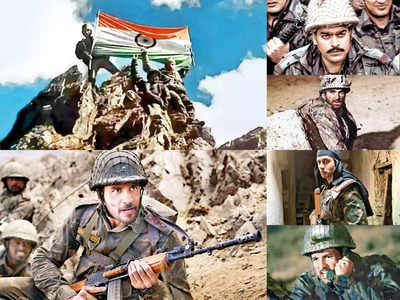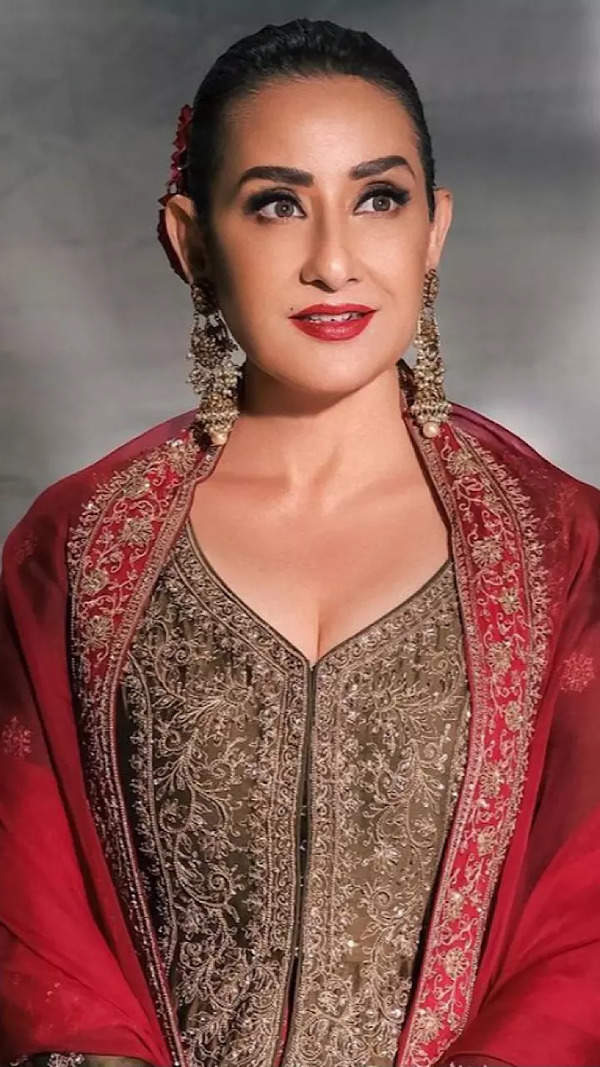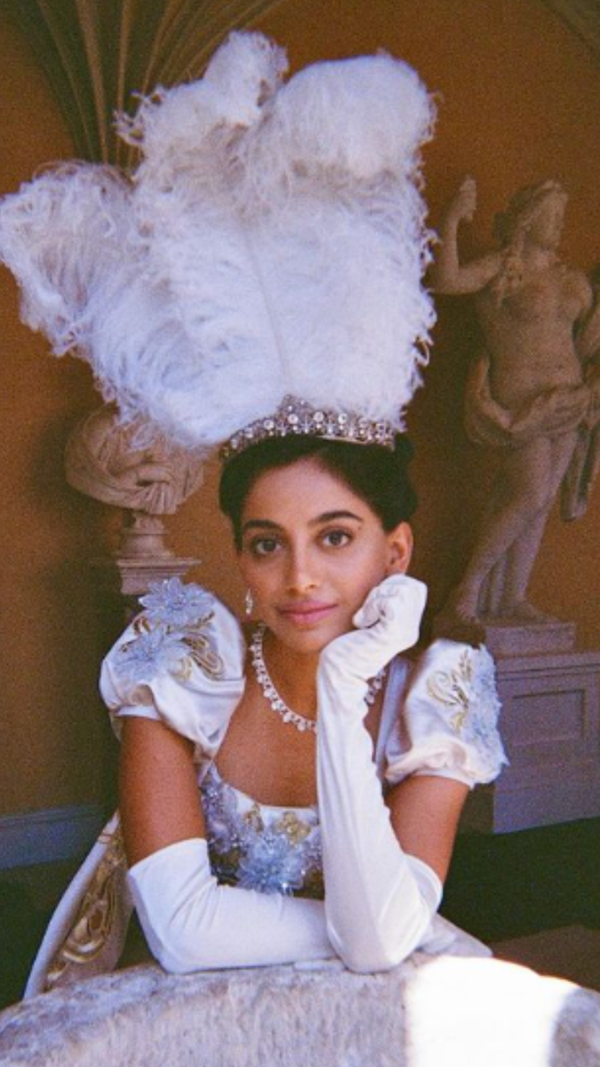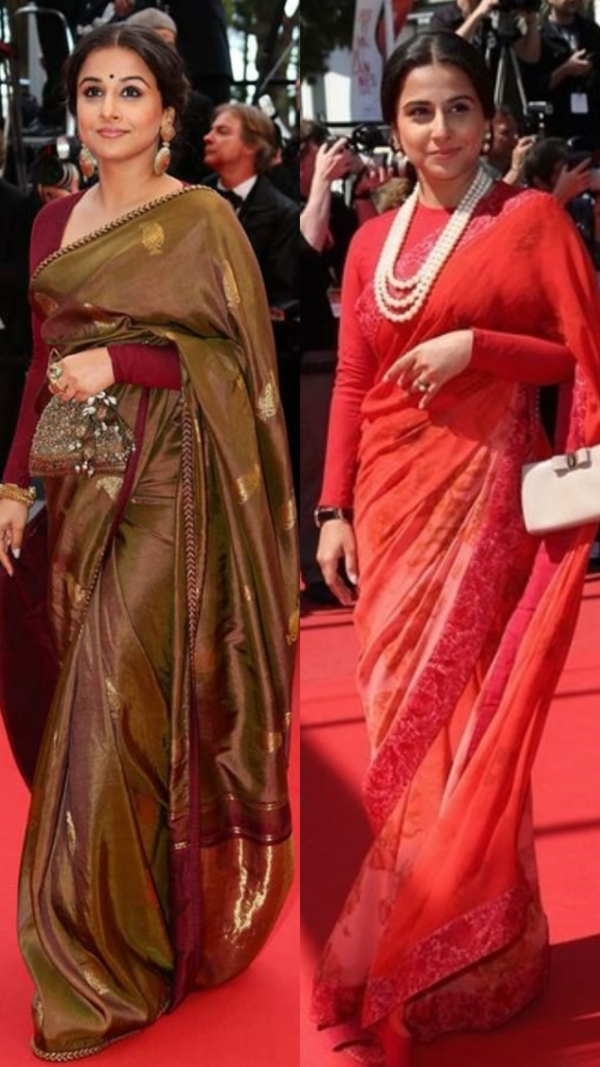- News
- entertainment
- hindi
- bollywood
- #KargilVijayDiwas: It’s a huge responsibility to play a real-life hero, say actors
Trending
This story is from July 26, 2022
#KargilVijayDiwas: It’s a huge responsibility to play a real-life hero, say actors
On Kargil Vijay Diwas today, leading actors who have essayed Kargil War heroes in films share their experiences of stepping into the shoes of these bravehearts for their roles in prominent movies. The actors also describe what they cherish about playing these roles and why the roles remain etched in their memory

Kargil Vijay Diwas is observed on July 26 to commemorate India’s victory in the Kargil War (1999) and pay homage to the bravery of the Armed Forces. Several Hindi films, including LOC: Kargil (2003) and Lakshya, have depicted these very tales on the screen. Recently, Shershaah (2021) highlighted Captain Vikram Batra’s sacrifice in the Kargil War, while Gunjan Saxena: The Kargil Girl (2020) put the spotlight on one of the first women in the Air Force to participate in a war.Actors who donned the uniform to recreate some of the most prominent tales of patriotism and bravery from the war zone tell us how being a part of such films impacted them.
‘Shooting at real locations makes you realise how our soldiers never get retakes in real life’
Sidharth Malhotra, who played Captain Vikram Batra in Shershaah, says, “Captain Vikram Batra laid down his life for all of us, and that holds true for all martyrs. We owe it to them to remind the people of India of the kind of sacrifices the Armed Forces make so that we can live in a democracy. The pressure and responsibility that comes with this kind of a role... one has to accept it. My approach as an actor was to focus on the specific qualities he displayed. We were the first Indian film to shoot at Kargil and that too, at a place which is just a few kilometres from where the actual war was fought. We were shooting at about 14,000 feet above sea level, where the oxygen levels are low and the winds are mighty. The mountains are devoid of any greenery. As a film crew, it was challenging to get the equipment to the location. It was physically strenuous for the crew. I am saying this from a filmmaking point of view, but it makes you realise how our soldiers have it so difficult, and they never get retakes in real life.”
‘Watching the soldiers made me rethink who the real heroes are’
‘When you play an Army officer, you have to transport yourself to that zone mentally, physically and emotionally’
Ashutosh Rana, who played Grenadier Yogendra Singh Yadav, in LOC: Kargil, asserts that the experience of playing this role only made him prouder of the men who protect the nation. He says, “When it is a real-life character, we get to understand the difference between the life they lead and the life we lead. We can’t do without a fireplace during winter and an air conditioner during summer, but they have to sometimes fight battles in sub-zero temperatures. When you play a character like that, you have to transport yourself to that zone mentally, physically and emotionally. We have to understand that these men are up against circumstances that are partially man-made and partially natural. Zameen ke tukde ke liye zameer ke saath khade rehna kya hota hai yeh samajhna zaroori hai. Hence, the experience of playing Grenadier Yogendra Singh Yadav has stayed with me for so many years. We were shooting at a place where the oxygen level was low. Our bodies are acclimatised to function at 100 per cent oxygen space. We were told that these officers have to walk like a yak…neeche dekho toh 10,000 feet ki khaai hai. And yet, they remain stable and fight the enemy for us. Working in that film taught me that even when situations are unfavourable, you have to find a favourable way to cope. Our brave soldiers are the unsung heroes of our lives whom we get a chance to pay homage to through our work.”
‘It’s an experience that’s hard to separate from one’s senses’
Rohit Roy, who played Captain Shashi Bhushan, in LOC: Kargil, says, “The first thing that comes to mind about this role is that moment we wore the uniform and started sharing space with the jawans posted there, something instantly changed inside all of us. That feeling of patriotism is difficult to describe even today. It’s an experience that’s hard to separate from one’s senses. One of the main reasons we won the war at that time was the deployment of the tanks, and I played the officer who commanded the unit. I felt a great sense of pride playing that role.”
‘Our chain ki saans is a result of the dangers these men live with and the extreme sacrifices they make’
Shiv Panditt, who played Captain Sanjeev Jamwal in Shershaah, says that one of the most difficult things about playing the character was absorbing the reality that it was seeped in. He says, “I don’t have a definitive way of approaching a character like this. He’s a real-life hero. I always go with the vision of the director. Vishnu sir (Vishnu Varadhan) was clear that he didn’t want anyone copying or mimicking the characters they were playing. So, we just had to absorb the essence of the person and bring them to life on screen. After doing the film, I realised that when you play a real-life hero, you feel a certain kind of responsibility, which is displayed in your demeanour. Our chain ki saans is a result of the dangers these men live with and the extreme sacrifices they make when the time comes. While shooting the film, I saw first-hand how these men live in tough circumstances. Shershaah gave me a chance to feel the passion and understand the perspective with which these soldiers live and die for the country.”
(With inputs from Onkar Kulkarni)
‘Shooting at real locations makes you realise how our soldiers never get retakes in real life’
Sidharth Malhotra, who played Captain Vikram Batra in Shershaah, says, “Captain Vikram Batra laid down his life for all of us, and that holds true for all martyrs. We owe it to them to remind the people of India of the kind of sacrifices the Armed Forces make so that we can live in a democracy. The pressure and responsibility that comes with this kind of a role... one has to accept it. My approach as an actor was to focus on the specific qualities he displayed. We were the first Indian film to shoot at Kargil and that too, at a place which is just a few kilometres from where the actual war was fought. We were shooting at about 14,000 feet above sea level, where the oxygen levels are low and the winds are mighty. The mountains are devoid of any greenery. As a film crew, it was challenging to get the equipment to the location. It was physically strenuous for the crew. I am saying this from a filmmaking point of view, but it makes you realise how our soldiers have it so difficult, and they never get retakes in real life.”
‘Watching the soldiers made me rethink who the real heroes are’
Suniel Shetty, who played Rifleman Sanjay Kumar in LOC: Kargil, shares, “Wearing the uniform itself instils a sense of responsibility. It made me think about how the soldiers stand there constantly to protect all of us. Instances like these made me rethink who the real heroes are here. We shot the film at one of the world’s most beautiful locations (Ladakh), but the terrain did make it tough for us to shoot there. I remember, during the Kargil War, I had volunteered to meet our soldiers at the base camp and the hospital. When I met them, I felt minuscule after seeing their sacrifice. There were soldiers who were badly injured, yet they wanted to go back and fight for their country. When I spoke to them, all they proudly said was, ‘desh ke liye marna hai’. It was the most humbling experience of my life. As I prepped up for the film, especially after I read the script and visited Dras where I spoke to some of the top Army officers, I realised that no other army could have won this war. It was our resilience, mental toughness, passion, love for our country and training because of which we fought and won.”
‘When you play an Army officer, you have to transport yourself to that zone mentally, physically and emotionally’
Ashutosh Rana, who played Grenadier Yogendra Singh Yadav, in LOC: Kargil, asserts that the experience of playing this role only made him prouder of the men who protect the nation. He says, “When it is a real-life character, we get to understand the difference between the life they lead and the life we lead. We can’t do without a fireplace during winter and an air conditioner during summer, but they have to sometimes fight battles in sub-zero temperatures. When you play a character like that, you have to transport yourself to that zone mentally, physically and emotionally. We have to understand that these men are up against circumstances that are partially man-made and partially natural. Zameen ke tukde ke liye zameer ke saath khade rehna kya hota hai yeh samajhna zaroori hai. Hence, the experience of playing Grenadier Yogendra Singh Yadav has stayed with me for so many years. We were shooting at a place where the oxygen level was low. Our bodies are acclimatised to function at 100 per cent oxygen space. We were told that these officers have to walk like a yak…neeche dekho toh 10,000 feet ki khaai hai. And yet, they remain stable and fight the enemy for us. Working in that film taught me that even when situations are unfavourable, you have to find a favourable way to cope. Our brave soldiers are the unsung heroes of our lives whom we get a chance to pay homage to through our work.”
‘It’s an experience that’s hard to separate from one’s senses’
Rohit Roy, who played Captain Shashi Bhushan, in LOC: Kargil, says, “The first thing that comes to mind about this role is that moment we wore the uniform and started sharing space with the jawans posted there, something instantly changed inside all of us. That feeling of patriotism is difficult to describe even today. It’s an experience that’s hard to separate from one’s senses. One of the main reasons we won the war at that time was the deployment of the tanks, and I played the officer who commanded the unit. I felt a great sense of pride playing that role.”
‘Our chain ki saans is a result of the dangers these men live with and the extreme sacrifices they make’
Shiv Panditt, who played Captain Sanjeev Jamwal in Shershaah, says that one of the most difficult things about playing the character was absorbing the reality that it was seeped in. He says, “I don’t have a definitive way of approaching a character like this. He’s a real-life hero. I always go with the vision of the director. Vishnu sir (Vishnu Varadhan) was clear that he didn’t want anyone copying or mimicking the characters they were playing. So, we just had to absorb the essence of the person and bring them to life on screen. After doing the film, I realised that when you play a real-life hero, you feel a certain kind of responsibility, which is displayed in your demeanour. Our chain ki saans is a result of the dangers these men live with and the extreme sacrifices they make when the time comes. While shooting the film, I saw first-hand how these men live in tough circumstances. Shershaah gave me a chance to feel the passion and understand the perspective with which these soldiers live and die for the country.”
(With inputs from Onkar Kulkarni)
End of Article
FOLLOW US ON SOCIAL MEDIA









